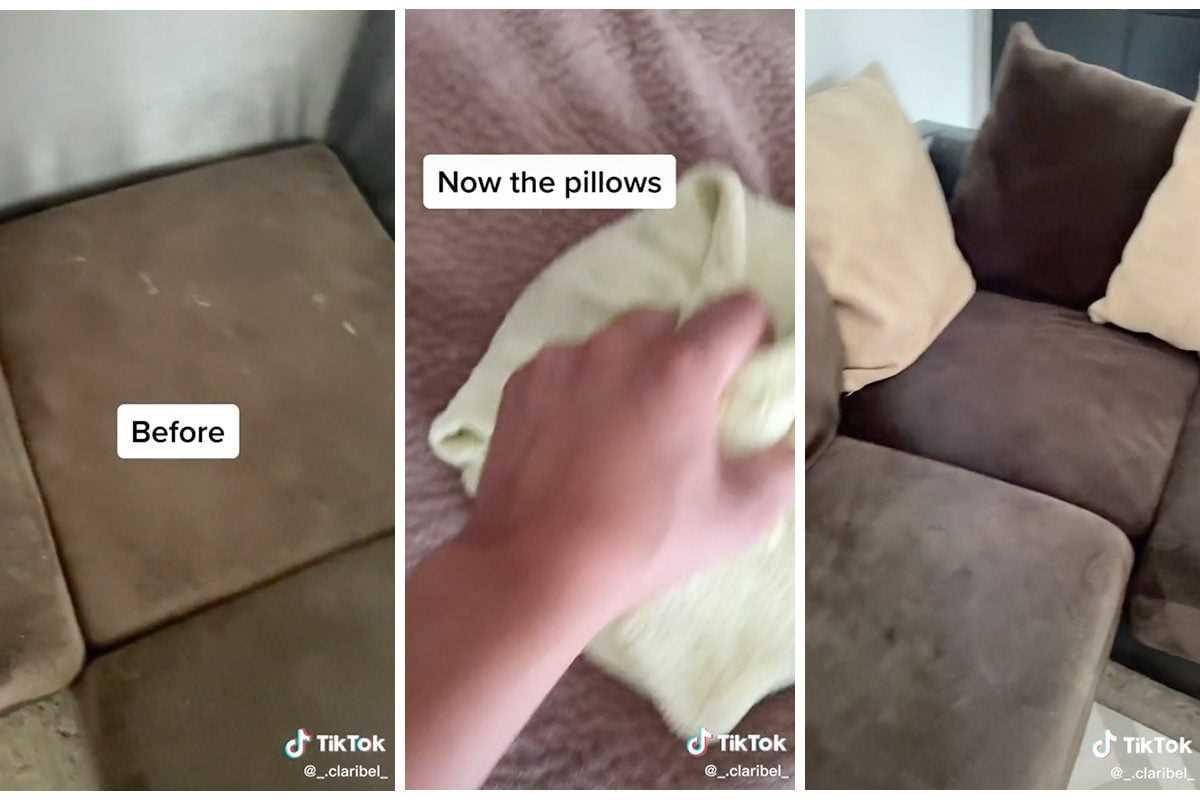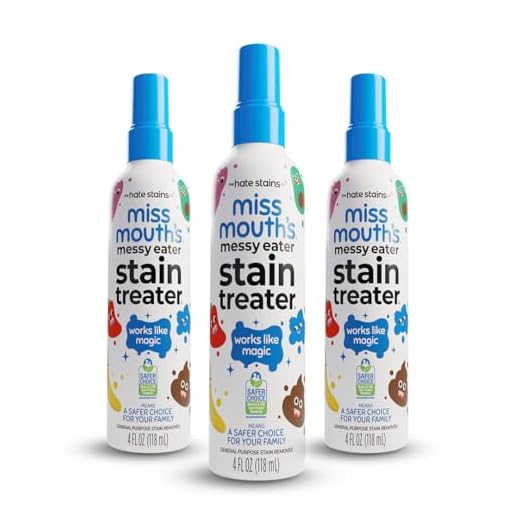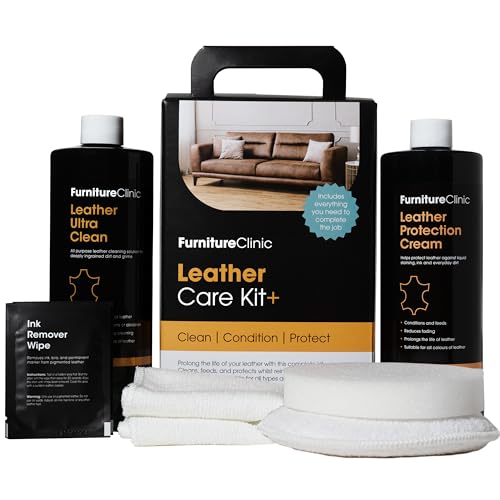




Is your upholstery looking drab and dirty? Are you in need of a fresh and clean look for your furniture? Don’t worry, we’ve got you covered! Cleaning upholstery doesn’t have to be a daunting task. With a few easy tips, you can make your furniture look as good as new.
The first step in cleaning upholstery is to identify the type of fabric you are dealing with. Different fabrics require different cleaning methods and products. Some fabrics may be more delicate and require gentle cleaning, while others can handle stronger cleaning solutions. It’s important to know the fabric’s cleaning instructions before you start.
Once you know the fabric type, the next step is to remove any loose dirt and debris from the upholstery. Use a vacuum cleaner with a soft brush attachment to gently remove dirt and dust from the surface. Be thorough and make sure to get into all the nooks and crannies.
Pro tip: If there are any spills or stains on the upholstery, it’s best to tackle them immediately.
After removing loose dirt, it’s time to spot clean any stains or spills that may be present. Use a mild detergent or upholstery cleaner specifically designed for your fabric type. Test the cleaner on a small, inconspicuous area of the upholstery to ensure it doesn’t cause any damage or discoloration. Apply the cleaner to the stain and gently blot it with a clean cloth. Avoid rubbing the stain, as this can cause it to spread.
Once the stains have been cleaned, it’s time to give your upholstery a thorough overall cleaning. This can be done using a steam cleaner or by hiring professional upholstery cleaning services. Steam cleaning is a great option for deep cleaning and sanitizing the fabric. Professionals have the expertise and equipment to ensure a thorough cleaning without causing any damage to the upholstery.
Remember, regular maintenance and cleaning of your upholstery is key to keeping it looking fresh and clean. Vacuuming regularly, treating stains promptly, and scheduling professional cleaning will help prolong the life of your furniture and keep it looking its best.
How to Clean Upholstery Easily
Gather Your Cleaning Supplies
Before you start cleaning your upholstery, it’s important to gather all the necessary cleaning supplies. Here’s a list of what you’ll need:
- Bucket
- Mild detergent
- White vinegar
- Warm water
- Clean microfiber cloth
- Soft-bristled brush
- Vacuum cleaner with upholstery attachment
Vacuum the Upholstery

Start by vacuuming the upholstery to remove any loose dirt, dust, or debris. Use the upholstery attachment on your vacuum cleaner to gently vacuum the surface of the upholstery. Pay special attention to the creases, corners, and edges where dirt tends to accumulate.
Remove Stains
If there are any stains on the upholstery, mix a solution of mild detergent and warm water. Dampen a clean microfiber cloth with the solution and gently blot the stained area. Avoid scrubbing the stain, as this may spread it or damage the fabric. If the stain persists, try a mixture of white vinegar and water in equal parts. Blot the stain again with the vinegar solution and let it sit for a few minutes before blotting it dry.
Clean the Entire Surface
To clean the entire surface of the upholstery, mix a solution of mild detergent and warm water in a bucket. Dip a clean microfiber cloth into the solution, wring out any excess liquid, and gently wipe the surface of the upholstery. Pay attention to any heavily soiled areas and repeat the process if necessary. Avoid saturating the fabric with water to prevent damage.
Dry the Upholstery
After cleaning the upholstery, it’s important to allow it to dry completely before using or sitting on it. Open windows or use fans to improve air circulation and speed up the drying process. Avoid direct sunlight, as it can fade the fabric. You can also use a hairdryer on a low heat setting to gently dry any remaining damp areas.
Repeat Regularly
To keep your upholstery looking fresh and clean, it’s recommended to clean it regularly. Vacuum the upholstery at least once a week to remove loose dirt and dust. Spot clean any stains as soon as they occur to prevent them from setting. Consider deep cleaning the upholstery every few months, depending on how frequently it is used.
Conclusion
By following these easy steps, you can clean your upholstery easily and effectively. Regular maintenance and spot cleaning can help prolong the life of your upholstery and keep it looking its best. Remember to always check the manufacturer’s instructions for specific care guidelines for your upholstery.
Quick Tips for a Fresh Look
1. Regularly Vacuum
One of the easiest and most effective ways to keep your upholstery looking fresh is by regularly vacuuming it. Use an upholstery attachment to remove any dust, dirt, and debris that may have settled on the surface. Pay special attention to areas where crumbs or pet hair may accumulate, such as the corners and crevices.
2. Blot Spills Immediately

If you accidentally spill something on your upholstery, it’s crucial to act quickly. Use a clean cloth or paper towel to gently blot the spill and absorb as much liquid as possible. Avoid scrubbing, as it may spread the stain or damage the fabric. If the stain persists, try using a mild upholstery cleaner according to the manufacturer’s instructions.
3. Rotate Cushions
To maintain an even wear pattern and keep your upholstery looking fresh, make sure to regularly rotate the cushions. This will prevent excessive wear on one side and help extend the lifespan of your furniture. If possible, also fluff and plump the cushions to restore their shape and comfort.
4. Protect from Sunlight
Excessive exposure to sunlight can cause fading and damage to your upholstery. To protect your furniture, consider using curtains, blinds, or UV-protective window films to reduce the amount of sunlight that enters the room. You can also rearrange your furniture or use covers to shield the upholstery from direct sunlight.
5. Use Fabric Fresheners
To keep your upholstery smelling fresh, you can use fabric fresheners. Look for products specifically designed for upholstery and follow the instructions on the packaging. Alternatively, you can create your own fabric freshener by mixing water with a few drops of your favorite essential oil in a spray bottle.
6. Professional Cleaning
For a deep and thorough cleaning, consider hiring a professional upholstery cleaning service. They have the knowledge, equipment, and cleaning agents to effectively remove dirt, stains, and odors from your upholstery. Professional cleaning can also help extend the lifespan of your furniture and keep it looking its best.
By following these quick tips, you can easily maintain a fresh and clean look for your upholstery. Regular cleaning and care will not only enhance the appearance of your furniture, but also contribute to a healthier and more inviting living space.
Essential Cleaning Supplies
Cleaning upholstery requires specific supplies to ensure a thorough and effective clean. Here are some essential cleaning supplies you will need:
- Vacuum Cleaner: A high-powered vacuum cleaner is necessary to remove loose dirt, dust, and debris from the upholstery surface. Make sure it has various attachments to reach different corners and crevices.
- Microfiber Cloths: Microfiber cloths are great for wiping down the upholstery and removing stains. They are gentle on the fabric and do not leave behind lint.
- Upholstery Cleaner: Choose an upholstery cleaner that is suitable for the fabric you are cleaning. Some cleaners are specifically designed for certain types of upholstery, such as leather or suede. Read the manufacturer’s instructions before using.
- Stain Removers: Keep a variety of stain removers on hand for different types of stains, such as ink, oil, food, or pet stains. Always test the stain remover on a small, inconspicuous area of the upholstery before applying it to the stain.
- Brushes: Different types of brushes, such as soft bristle brushes or upholstery brushes, are useful for agitating the cleaner into the fabric and removing stubborn stains. Choose brushes with soft bristles to avoid damaging the upholstery.
- Protective Gloves: It is important to protect your hands while cleaning. Wear rubber or latex gloves to avoid direct contact with cleaning products, as some may contain harsh chemicals.
- Bucket: A bucket can be used to mix cleaning solutions or carry water for rinsing the cloth. Make sure it is clean and free from any residue or contaminants.
- White Vinegar: White vinegar is a natural and effective cleaner that can be diluted with water to remove odors and stains. It is a versatile cleaning agent that can also be used for general household cleaning tasks.
Having these essential cleaning supplies on hand will make the upholstery cleaning process easier and more efficient. Remember to always read and follow the instructions provided with the cleaning products to ensure safe and effective results.
Step-by-Step Cleaning Process
Gather the necessary supplies

Before you begin cleaning your upholstery, make sure you have all the necessary supplies. This may include a vacuum cleaner, upholstery cleaner, white vinegar, mild detergent, microfiber cloths, clean white towels, and a bucket of warm water.
Preparation
Start by removing any loose debris from the upholstery using a vacuum cleaner with a brush attachment. This will help remove dust, dirt, and pet hair from the surface. Be sure to vacuum both sides of cushions and in between any crevices.
Spot Clean Stains
If you notice any stains on your upholstery, it’s important to spot clean them as soon as possible. Mix a small amount of mild detergent with warm water and use a clean white cloth to gently blot the stained area. Avoid scrubbing, as this can spread the stain or damage the fabric. Rinse the area with clean water and blot with a towel to remove any remaining detergent.
Deep Clean
For a deeper clean, you can use an upholstery cleaner or make your own solution with equal parts water and white vinegar. Test the solution on a small, inconspicuous area of your upholstery to ensure it doesn’t cause any damage or discoloration. If the solution is safe to use, apply it to the entire surface of your upholstery using a clean cloth or sponge. Gently scrub the fabric in circular motions to lift dirt and stains.
Drying
After cleaning, it’s important to allow your upholstery to dry properly. Open windows or turn on fans to help expedite the drying process. Avoid sitting or placing any objects on the upholstery until it is completely dry.
Regular Maintenance
To keep your upholstery looking fresh and clean, it’s important to regularly maintain it. This includes vacuuming on a weekly basis and promptly addressing any spills or stains. Additionally, consider using fabric protectors to help repel stains and make future cleaning easier.
By following this step-by-step cleaning process, you can effectively clean your upholstery and restore its fresh and clean look.
Removing Tough Stains
When it comes to upholstery, tough stains can be a nightmare to deal with. However, with the right techniques and products, you can effectively remove even the toughest stains from your upholstery and give it a fresh and clean look. Here are some tips to help you remove tough stains:
1. Blot the Stain

The first step in removing tough stains from upholstery is to blot the stain as soon as possible. Use a clean cloth or paper towel to gently blot the stain, being careful not to rub or scrub, as this can spread the stain and make it more difficult to remove.
2. Identify the Stain
Identifying the type of stain is crucial in choosing the right cleaning method and product. Common tough stains on upholstery include red wine, coffee, ink, and pet stains. Once you know what type of stain you’re dealing with, you can choose the appropriate stain remover.
3. Test the Stain Remover
Before applying the stain remover to the entire stain, it’s important to test it on a small, inconspicuous area of the upholstery. This will ensure that the stain remover doesn’t cause any damage or discoloration to the fabric.
4. Pre-Treat the Stain
For tough stains, it’s often helpful to pre-treat the stain before applying the stain remover. This can be done by gently dabbing the stain with a mixture of water and mild detergent or a specialized upholstery cleaner. Allow the pre-treatment to sit for a few minutes before moving on to the next step.
5. Apply the Stain Remover
Once you’ve pre-treated the stain, apply the stain remover directly to the stain according to the product instructions. Use a clean cloth or sponge to gently work the stain remover into the fabric. Avoid scrubbing too vigorously, as this can damage the upholstery.
6. Blot and Repeat
After applying the stain remover, use a clean cloth or paper towel to blot the stain. Repeat this process until the stain is no longer visible or until the cloth no longer absorbs any more of the stain.
7. Rinse the Area
Once the stain is removed, it’s important to rinse the area thoroughly to remove any residue from the stain remover and prevent it from attracting dirt. Use a clean cloth dampened with water to gently blot and rinse the area. Allow the upholstery to air dry.
Remember, when dealing with tough stains on upholstery, it’s always best to act quickly and be gentle. If the stain persists or if you’re unsure about how to proceed, it’s always a good idea to seek professional help.
Maintenance Tips for Upholstery
Regular maintenance is crucial for keeping your upholstery clean and looking fresh. Follow these simple tips to keep your upholstery in great condition:
Vacuum Regularly
1. Vacuum your upholstery at least once a week to remove dust, dirt, and debris. Use a soft brush attachment to gently vacuum the surface and crevices. This will prevent dirt from settling deep into the fabric.
Spot Clean Stains Immediately
2. Accidents happen, so it’s important to address stains as soon as they occur. Blot the stain gently using a clean, white cloth. Avoid scrubbing, as it can damage the fabric. Use a mild detergent or upholstery cleaner specifically formulated for your type of fabric.
Rotate Cushions
3. To ensure even wear and tear, rotate the cushions on your upholstery regularly. This will help maintain the shape and appearance of your furniture. If possible, also flip the cushions to distribute the weight evenly.
Avoid Direct Sunlight
4. Direct sunlight can fade and damage upholstery fabric over time. Keep your furniture away from windows or use curtains and blinds to block out the sun’s rays. If this isn’t possible, consider using UV-protective window film to prevent fading.
Protect with Slipcovers
5. Consider using slipcovers to protect your upholstery from spills, stains, and pet hair. Slipcovers are removable and washable, making them an ideal solution for households with children or pets. They also allow you to change the look of your furniture easily.
Professional Cleaning
6. Schedule professional upholstery cleaning at least once a year, especially for heavily used furniture. Professional cleaners have the expertise and equipment to deep clean and extract dirt, allergens, and odors from your upholstery. This will help prolong its lifespan and keep it looking its best.
Proper Care Instructions

7. Always follow the manufacturer’s care instructions for your upholstery. Different fabrics require different cleaning methods, and using the wrong products or techniques may cause damage. If in doubt, consult a professional or the manufacturer for guidance.
Preventive Measures
8. Take preventive measures to protect your upholstery from spills and stains. Use coasters, placemats, and trays to prevent damage from glasses, plates, and food. Keep pets off the furniture or use protective covers. Encourage family members or guests to remove clothing with sharp objects, such as belt buckles or keys, before sitting on the upholstery.
By following these maintenance tips, you can extend the life of your upholstery and keep it looking fresh and clean for years to come.
FAQ
What are some easy tips to clean upholstery?
There are several easy tips to clean upholstery. First, vacuum the upholstery to remove any loose dirt and debris. Then, mix a solution of gentle detergent and water, and use a soft brush or cloth to gently scrub the upholstery. Let the solution sit for a few minutes, and then blot the area with a clean cloth to remove the dirt. Finally, allow the upholstery to air dry.
Can I use vinegar to clean upholstery?
Yes, you can use vinegar to clean upholstery. Vinegar is a natural and effective cleaning solution. Mix equal parts of vinegar and water, and use a soft cloth or sponge to gently scrub the upholstery. Let the solution sit for a few minutes, and then blot the area with a clean cloth to remove the dirt. Vinegar helps to neutralize odours and kill bacteria, leaving your upholstery fresh and clean.
What should I do if there are stains on my upholstery?
If there are stains on your upholstery, it’s important to act quickly. First, blot the stain with a clean cloth to remove any excess liquid. Then, mix a solution of mild detergent and warm water, and gently scrub the stain using a soft brush or cloth. Rinse the area with clean water, and blot it dry with a clean cloth. If the stain persists, you may need to repeat the process or consider using a specialized upholstery cleaner.
Are there any preventive measures to keep upholstery clean?
Yes, there are several preventive measures that can help keep upholstery clean. First, place removable covers on your upholstery to protect it from spills and stains. It’s also a good idea to vacuum your upholstery regularly to remove any loose dirt and debris. If you have pets, consider using a pet hair remover or cover to prevent pet hair from accumulating on your upholstery. Finally, avoid eating or drinking on your upholstery to minimize the risk of spills and stains.
















